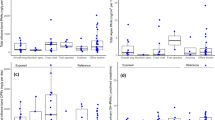Abstract
To evaluate occupational exposures as risk factors for hairy cell leukaemia (HCL), a population-based case-control study on 121 male HCL patients and 484 controls matched for age and sex was conducted. Elevated odds ratio (OR) was found for exposure to farm animals in general: OR 2.0, 95% confidence interval (CI) 1.2-3.2. The ORs were elevated for exposure to cattle, horse, hog, poultry and sheep. Exposure to herbicides (OR 2.9, CI 1.4-5.9), insecticides (OR 2.0, CI 1.1-3.5), fungicides (OR 3.8, CI 1.4-9.9) and impregnating agents (OR 2.4, CI 1.3-4.6) also showed increased risk. Certain findings suggested that recall bias may have affected the results for farm animals, herbicides and insecticides. Exposure to organic solvents yielded elevated risk (OR 1.5, CI 0.99-2.3), as did exposure to exhaust fumes (OR 2.1, CI 1.3-3.3). In an additional multivariate model, the ORs remained elevated for all these exposures with the exception of insecticides. We found a reduced risk for smokers with OR 0.6 (CI 0.4-1.1) because of an effect among non-farmers.
This is a preview of subscription content, access via your institution
Access options
Subscribe to this journal
Receive 24 print issues and online access
$259.00 per year
only $10.79 per issue
Buy this article
- Purchase on Springer Link
- Instant access to full article PDF
Prices may be subject to local taxes which are calculated during checkout
Similar content being viewed by others
Author information
Authors and Affiliations
Rights and permissions
About this article
Cite this article
Nordström, M., Hardell, L., Magnuson, A. et al. Occupational exposures, animal exposure and smoking as risk factors for hairy cell leukaemia evaluated in a case-control study. Br J Cancer 77, 2048–2052 (1998). https://doi.org/10.1038/bjc.1998.341
Issue Date:
DOI: https://doi.org/10.1038/bjc.1998.341
This article is cited by
-
Occupational exposure to glyphosate and risk of lymphoma:results of an Italian multicenter case-control study
Environmental Health (2021)
-
Cancer and occupational exposure to pesticides: an umbrella review
International Archives of Occupational and Environmental Health (2021)
-
Pesticides: an update of human exposure and toxicity
Archives of Toxicology (2017)
-
Genetics of hairy cell leukemia
Oncology Reviews (2008)
-
Lifestyle factors and the risk of adult leukemia in Canada
Cancer Causes & Control (2005)



